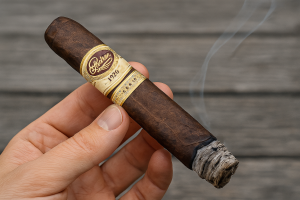How to Fix a Torch Lighter: A Comprehensive Guide to Troubleshooting and Repairing Your Torch Lighter

Torch lighters are an essential tool for many, from chefs seeking precision in their culinary tasks to outdoor enthusiasts needing reliable flame sources.
However, like any mechanical device, they can occasionally malfunction. Understanding how to troubleshoot and fix common issues with a torch lighter can save you time and money.
This guide will explore how to fix a torch lighter, provide helpful tips and practical solutions to ensure your torch lighter is reliable and ready to use.
Effective Solutions for Fixing Torch Lighters
Torch lighters are excellent tools, especially for cigar aficionados and outdoor enthusiasts. However, like any device, they can sometimes malfunction. Here’s a guide to getting your torch lighter back in working order, whether it’s a quick adjustment or a bit of cleaning.
1. Refill the Fuel Properly
- Use High-Quality Butane: Always refill your lighter with high-quality butane fuel to avoid impurities that can clog the lighter.
- Purge Before Refilling: Press the refill valve with a small tool (like a paper clip) to release any remaining gas and air pockets. This step helps prevent inconsistent flames.
- Allow Time for Settling: After refilling, let the lighter rest for a few minutes to stabilize the gas inside and prevent any potential misfires.
- Pro Tip: Avoid shaking the butane canister before refilling, as this can introduce air bubbles, disrupting the fuel flow.
2. Adjust the Flame Setting
- Locate the Adjustment Wheel: Most torch lighters have an adjustment wheel or screw at the bottom. Use a small flathead screwdriver or your fingers (if accessible) to turn it.
- Increase the Flame Height Gradually: Turn the wheel slightly higher if the flame is too low or inconsistent. However, avoid turning it to the maximum setting, which can make the flame too large and unstable.
- Pro Tip: Always make small adjustments to avoid over-fueling, which can cause sputtering flames or difficulty in igniting.
3. Clean the Jets and Ignition Area
- Use Compressed Air: Blow out dust, debris, or carbon buildup from the lighter’s jets and ignition area with a can of compressed air. This helps ensure a clean flame and smoother ignition.
- Check for Residue: Wipe the nozzle with a cotton swab to remove any visible residue that may be blocking the fuel path.
- Inspect the Flame Nozzle: If the flame is sputtering or uneven, a clogged nozzle may be the cause. Gently use a fine wire to dislodge any debris in the nozzle.
- Pro Tip: Regular cleaning helps prevent blockages and ensures a consistent flame, especially if you use your lighter frequently.
4. Check the Ignition Spark
- Observe the Spark: Hold the lighter up to eye level and press the ignition to check for a visible spark.
- Replace the Ignition Piezo: If there’s no spark, the piezo igniter (the small metal piece that creates the spark) may be worn out and require replacement. You can find compatible replacement parts online or at specialty stores.
- Align the Electrode: Sometimes, the electrode may be misaligned. Gently reposition it to ensure it makes contact with the gas flow.
- Pro Tip: Test the spark in a dark room to easily spot any issues with ignition.
5. Avoid Overheating and Rest Between Uses
- Use the Lighter for Short Intervals: Continuous use can overheat the lighter, causing fuel flow issues. Allow it to cool down between uses.
- Prevent Pressure Build-Up: Avoid pressing the ignition repeatedly without giving the lighter time to rest, as this can damage the internal components and reduce its lifespan.
- Pro Tip: If the lighter feels warm to the touch, give it a few minutes to cool down before reigniting.
With these methods, you can keep your torch lighter in optimal condition and extend its lifespan. Whether it’s a quick refill, cleaning, or adjusting the flame, regular maintenance ensures that your lighter works perfectly every time you need it.

Common Issues with Torch Lighters
1. Refilling Problems
- No Fuel: Check if the lighter is empty. A simple refill often solves the issue.
- Improper Refilling: Ensure you're refilling the lighter correctly. Let it sit for a few minutes after filling to prevent internal pressure issues.
2. Clogged Nozzle
- Debris Buildup: Inspect the nozzle for dirt or debris that can impede the gas flow. A simple cleaning can resolve this issue.
- Blocked Jet: Use a pin or needle to clean out any blockages in the jet that can lead to uneven flame.
3. Ignition Failure
- Flint Issues: If your lighter has a flint, check if it’s worn out or needs replacement. A worn flint can prevent the ignition.
- Piezoelectric Ignition: If the lighter has a piezoelectric ignition, ensure there's no damage to the ignition mechanism. Tap it gently if necessary to reset any potential blockage.
4. Flame Issues
- Weak or Uneven Flame: This can often stem from an improperly filled tank or a clogged nozzle. Cleaning or refilling usually resolves this.
- Flame Too High/Low: Adjust the flame settings typically located at the bottom of the lighter. Remember to make these adjustments in small increments.
Troubleshooting Less Common Torch Lighter Problems
While many issues with torch lighters are straightforward, some problems are less common but can still hinder performance. Here’s how to address these rarer issues to keep your torch lighter functioning perfectly.
1. Gas Leak Detection
- Listen for Hissing: If you hear a faint hissing sound, it may indicate a gas leak. Check the refill valve and the nozzle to see if there is any residual gas escaping.
- Apply Soap Solution: To confirm a leak, apply a small amount of soapy water around the valve and nozzle. If bubbles appear, there’s a leak that may require professional repair or replacement of the lighter.
- Pro Tip: Avoid using a leaking lighter, as it poses a fire hazard. Instead, consult a professional or replace it if the leak persists.
2. Frozen Valve
- Warm It Up: Cold weather or overuse can cause the valve to temporarily freeze, affecting gas flow. Let the lighter sit at room temperature for a few minutes before trying again.
- Avoid Overuse: Rapid, repeated ignitions can overheat the lighter, which can then lead to a frozen or jammed valve once it cools quickly. Use in short intervals to prevent this.
- Pro Tip: Keep the lighter in a warm pocket or environment if you’re using it outdoors in cold conditions to avoid freezing issues.
3. Faulty Adjustment Wheel
- Check for Debris: Dirt and debris can jam the adjustment wheel, causing difficulty in changing the flame setting. Clean around the wheel with a small brush to ensure smooth operation.
- Inspect for Looseness: If the adjustment wheel feels loose or spins too freely, it may have become stripped or damaged. In this case, replacement might be necessary.
- Pro Tip: Use a small screwdriver to tighten or adjust the wheel if it seems loose, ensuring that the flame setting stays consistent.
4. Weak or No Spark Due to Humidity
- Dry Out the Lighter: High humidity can sometimes interfere with the spark generation. Let the lighter sit in a dry place or gently blow-dry it on a cool setting to eliminate any moisture.
- Store in a Dry Environment: When not in use, store your lighter in a dry place to reduce the chance of moisture affecting its performance.
- Pro Tip: Use silica gel packets around your storage area to absorb excess humidity and keep your lighter dry.
5. Button or Trigger Malfunctions
- Test the Button Mechanism: Over time, the button or trigger can become stiff or fail to press down completely. Gently clean around the button area with compressed air to remove any dust or grime buildup.
- Lubricate with Caution: In some cases, a tiny drop of lubricant can help, but avoid using excessive amounts, as they can interfere with the lighter’s mechanism.
- Pro Tip: If the button still feels jammed after cleaning, consult a repair specialist to avoid further damage.
Addressing these less common issues can make a significant difference in the performance and longevity of your torch lighter. By handling even rare problems with care, you can ensure your lighter remains dependable and ready whenever you need it.
Master the Art of Torch Lighter Troubleshooting
A well-maintained torch lighter is essential for enjoying a flawless flame whenever you need it. From refilling properly to cleaning and troubleshooting, understanding how to fix common issues helps you keep your lighter working smoothly and efficiently. With these practical tips and maintenance routines, you’ll ensure that your torch lighter is always reliable, whether for outdoor adventures or cigar lighting.
Ready to take your cigar experience to the next level? Pair your torch lighter with a premium cigar from our curated selection for the ultimate enjoyment. Visit Online Cigars today!
Key Takeaways:
- Routine Maintenance: Regularly clean and inspect your torch lighter to extend its lifespan.
- Use Quality Fuel: Invest in high-quality butane to minimize clogging and malfunctioning.
- Know Your Lighter: Familiarize yourself with the specific components of your model, as different types may require unique maintenance steps.















